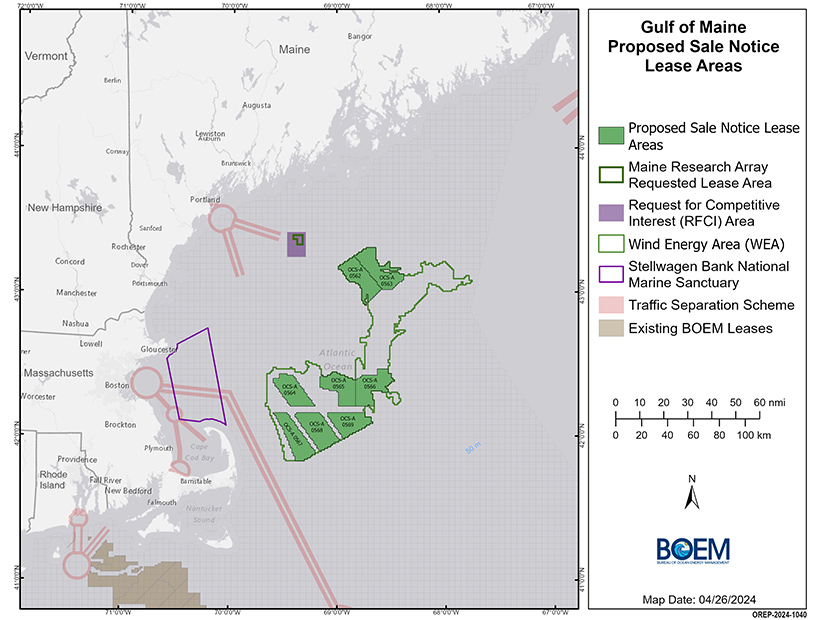The United States is a step closer to its first potential floating offshore wind farm.
The Bureau of Ocean Energy Management said May 28 it has completed its environmental assessment of the state of Maine’s request for a lease area where it could place a research array. It found the lease and the site assessment work that would be done on it would have no significant impact on the environment.
BOEM offered the state a research lease May 24. Maine must accept or reject BOEM’s offer or request modifications within 30 days.
Gov. Janet Mills (D) responded in a prepared statement May 28 that the lease offer is a “major milestone” for the state in its efforts to site offshore wind and that her administration looks forward to reviewing it.
Floating wind turbines are a relatively new technology only now beginning to be installed on a larger scale. The technology is still being developed and tested, and at this point it is more expensive and complicated than the fixed-bottom turbine technology that has come into widespread use worldwide over the past three decades.
For years, Maine has sought to be a leader in floating wind in the United States — as a way to extract emissions-free electricity from its lengthy but deep coastal waters and to build a new industry. (See Maine Finalizes Offshore Wind Roadmap.)
The University of Maine has been researching the concept and execution for more than a decade, and generated electricity with a downscaled turbine it set afloat in 2013/14.
In October 2021, Maine requested the research lease that has now been offered.
It would allow the state to place up to 12 turbines with a combined rating of up to 144 MW on up to 9,728 acres within a 34,596-acre research lease area 28 nautical miles southeast of Portland.
BOEM’s final environmental assessment determined the likely impacts of the research array would be negligible or negligible to minor.
In its news release, BOEM Director Elizabeth Klein said: “Floating wind technology can make offshore wind a reality in the Gulf of Maine. BOEM will continue to work in partnership with the state of Maine as we move forward to facilitate the responsible development of offshore wind in this region, as well as the deployment of floating offshore wind technology nationwide.”
In her press release, Mills said: “Offshore wind offers our state a tremendous opportunity to harness abundant clean energy in our own backyard, to create good-paying jobs and drive economic development, and to reduce our over-reliance on fossil fuels and fight climate change.”
As it advances Maine’s research lease request, BOEM simultaneously is setting the stage for commercial offshore wind development in the Gulf of Maine.
In April, it proposed an auction for eight lease areas totaling nearly 1 million acres and holding a potential 15 GW of capacity. Six of the eight commercial areas would be well south of the research area, closer to the outer arm of Cape Cod than to Maine. (See Wind Energy Lease Areas Designated in Gulf of Maine, Oregon.)



